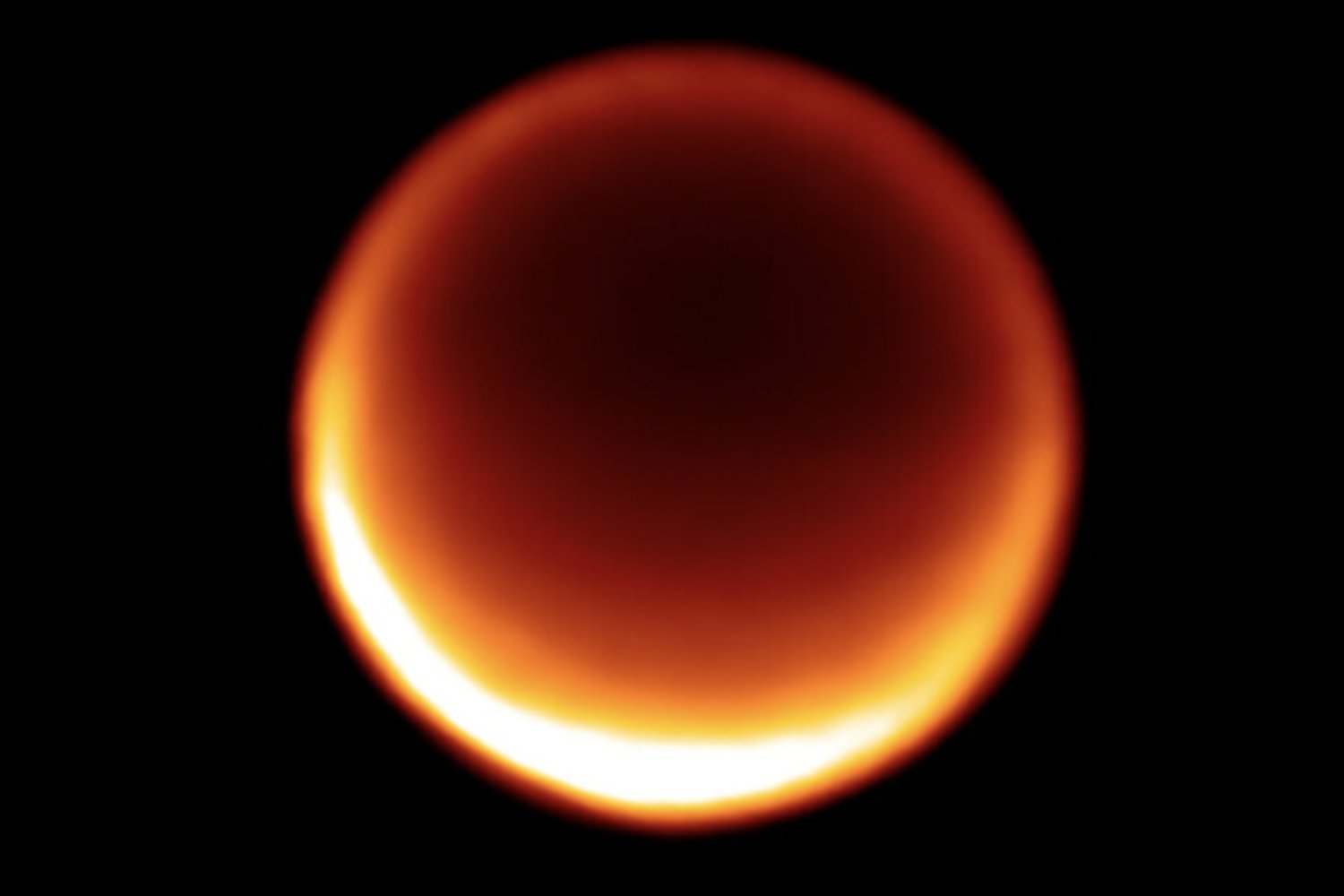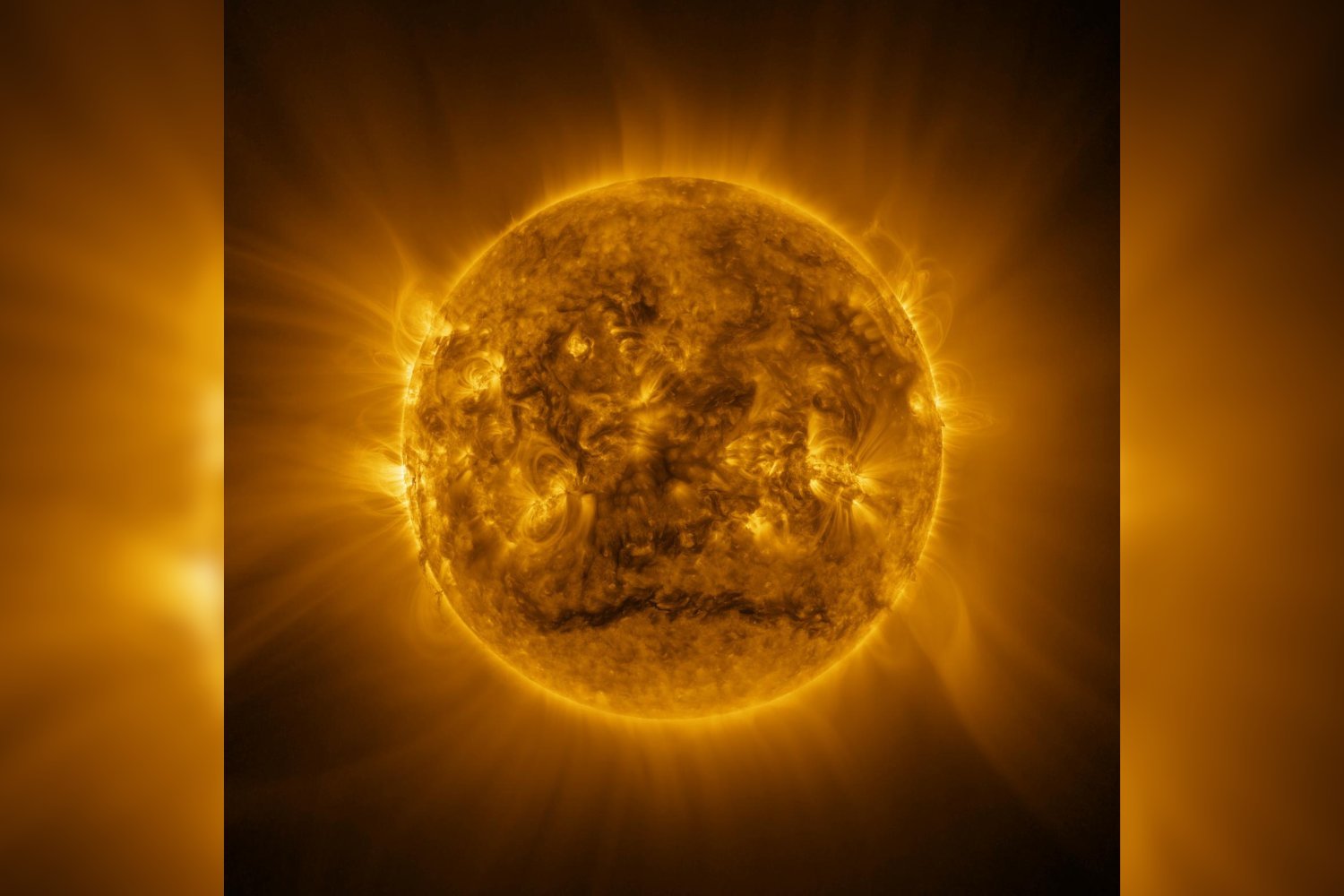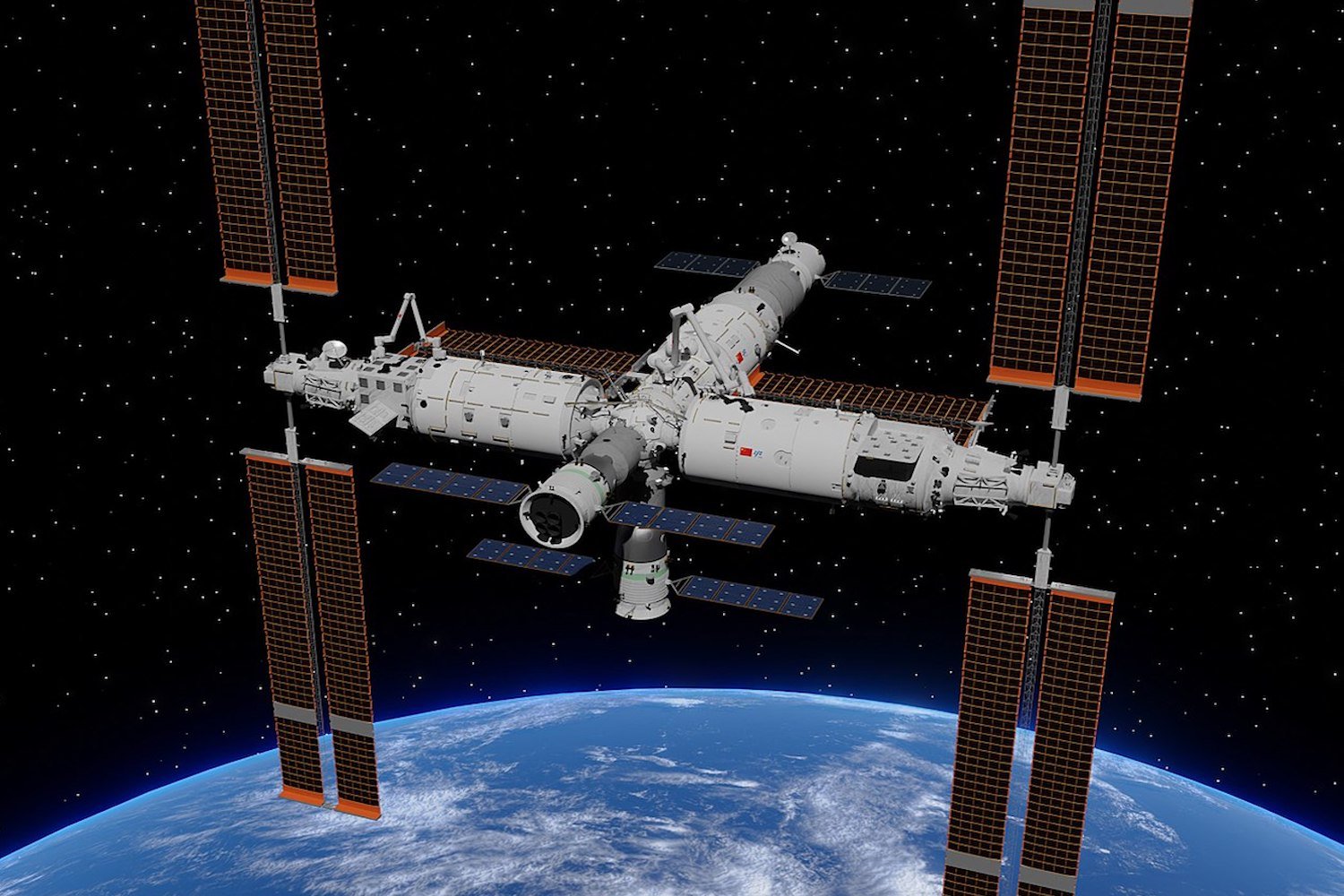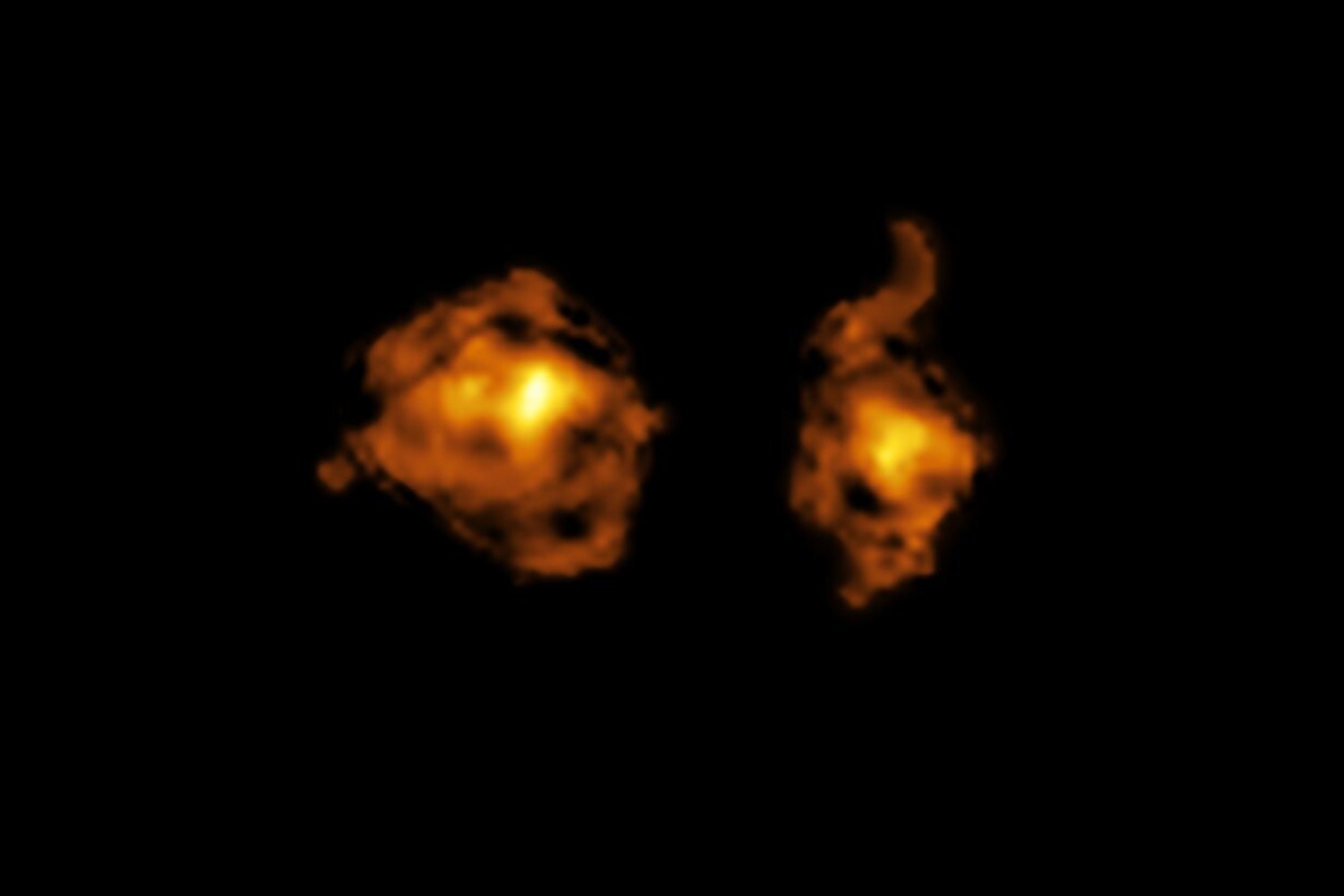Titan, Saturn’s largest moon, is a world of cold, oily methane rain, vastly different from Earth’s water cycle. Scientists have observed, for the first time, evidence of methane cloud convection in Titan’s northern hemisphere, providing a glimpse into the moon’s dynamic weather patterns. This discovery sheds light on how methane clouds form, evolve, and potentially replenish the moon’s methane lakes and seas.
Titan’s thick, hazy atmosphere has long obscured its surface, making it difficult to study. However, by combining infrared data from the James Webb Space Telescope and the Keck Observatory, researchers have now observed these methane clouds shifting and rising to higher altitudes over several days in Titan’s northern latitudes. This observation is significant because the northern hemisphere is home to most of Titan’s methane lakes and seas. This research is detailed in a recent study published in Nature.
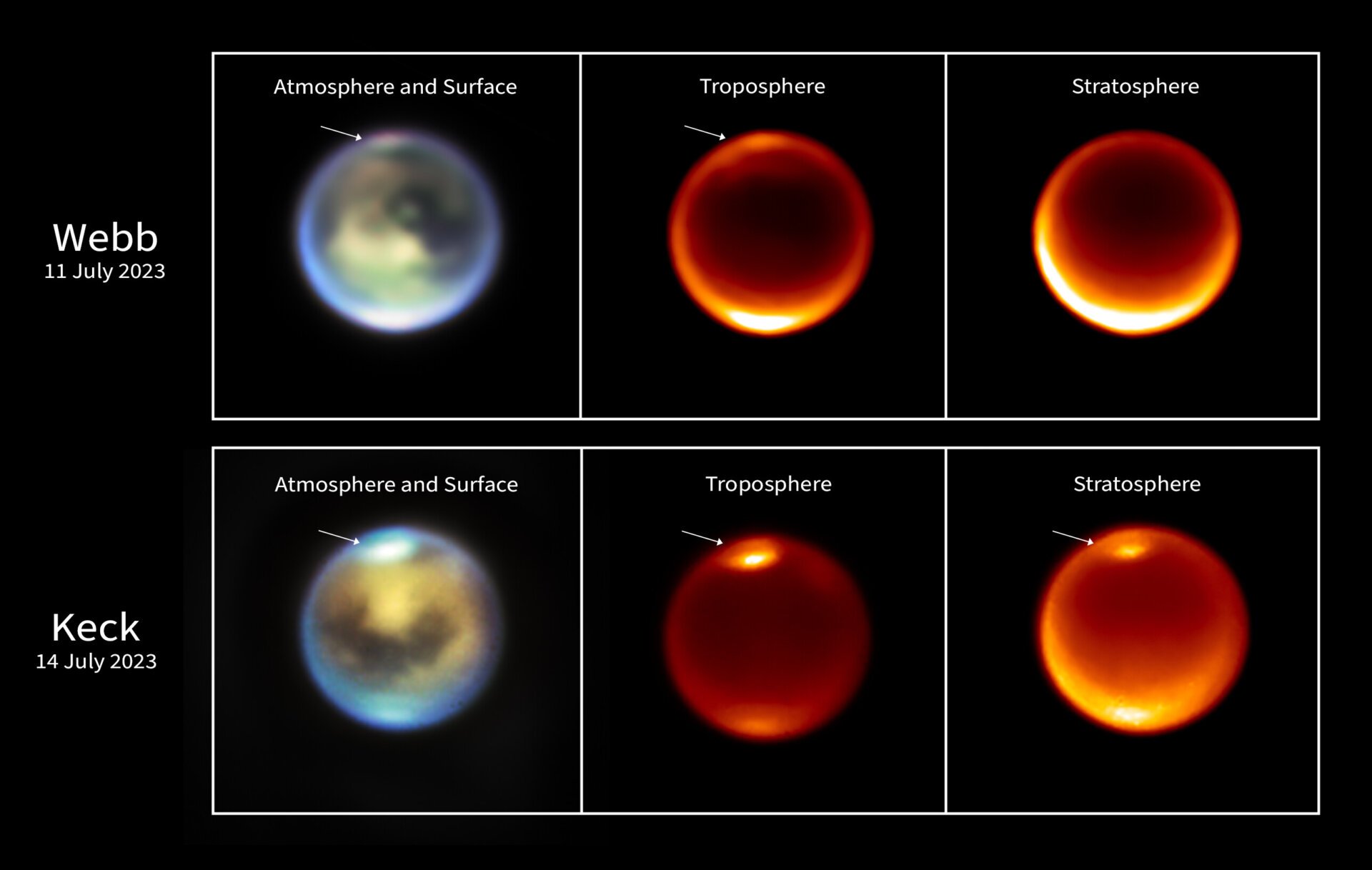 Titan (webb And Keck Image 11 And 14 July 2023)
Titan (webb And Keck Image 11 And 14 July 2023)
This discovery allows scientists to better understand Titan’s climate cycle, including how methane clouds might produce rain and replenish the methane lost through evaporation from its lakes and seas. Lead author Conor Nixon, a research scientist at NASA Goddard Space Flight Center, explains that this convective process provides valuable insights into the complex interplay between Titan’s atmosphere and surface liquids. While the researchers didn’t directly observe rainfall, the cloud movements strongly suggest the potential for precipitation.
Titan is unique in our solar system. It’s the only moon with a dense atmosphere and the only other celestial body known to have an Earth-like liquid cycle. However, on Titan, this cycle involves methane and ethane instead of water. These hydrocarbons form clouds, rain down on the surface, create rivers and lakes, and eventually evaporate back into the atmosphere, mimicking Earth’s water cycle. As stated by NASA, this unique characteristic makes Titan a fascinating subject for planetary scientists.
 Titan (webb And Keck Image 11 And 14 July 2023)
Titan (webb And Keck Image 11 And 14 July 2023)
Beyond the methane cycle, Titan also possesses a complex organic chemistry, despite its extremely cold temperatures. Organic molecules, the building blocks of life as we know it, are abundant on Titan. Studying this moon allows scientists to explore the potential for different forms of life to develop under vastly different environmental conditions.
This research also provides valuable insights into the long-term evolution of planetary bodies. Nixon points out that methane on Titan is a consumable resource. It’s believed that methane might be constantly replenished from the moon’s crust and interior, but if this process stops, Titan could eventually lose its atmosphere and become a barren world of dust and dunes. Therefore, understanding the current methane cycle is crucial to predicting Titan’s future.
In conclusion, observing cloud convection on Titan is a significant step toward understanding this complex and intriguing moon. The research provides valuable data on Titan’s climate, methane cycle, and the potential for life beyond Earth, highlighting the importance of continued exploration of this unique world.



